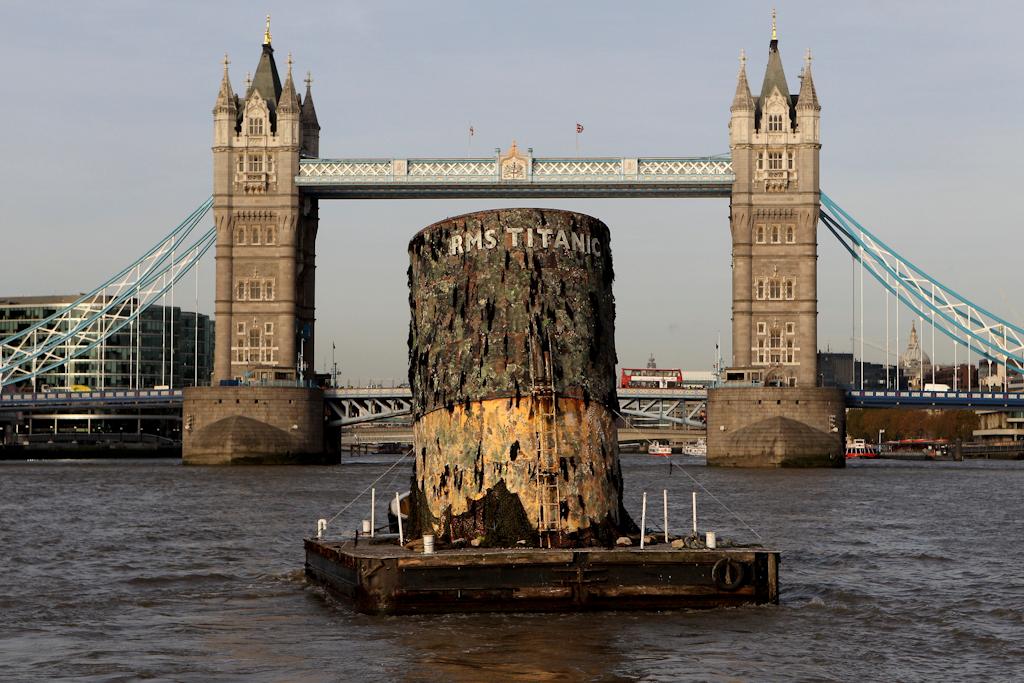Titanic sunk by “supermoon”?
A replica of the upper section of the fourth funnel of the Titanic is towed along the river Thames towards Tower Bridge on November 3, 2010 in London, England. The replica funnel has been created to launch a new exhibition of artefacts recovered from the wreck of the Titanic cruise liner which sunk in the North Atlantic on April 15, 1912.
Researchers at Texas State University say the allignment of the sun, the Earth and the moon may have something to do with the sinking of the Titanic, according to Outcome Magazine. The once-in-a-lifetime lineup happened three months before the April 15, 1912, sinking, but it may have been what caused a record high tide that carried icebergs farther south in the Atlantic than anyone expected.
More from GlobalPost: Your body parts, made to order
Greenland icebergs — the type that the Titanic struck — usually get stuck in the shallow waters off Labrador and Newfoundland in Canada, reported Reuters, and cannot continue moving southward until they have melted enough to float again or until a high tide sets them free.
But the R.M.S. Titanic went down on a moonless night, according to National Geographic. Texas State astronomer Donald Olson believes the iceberg boom was the result of the rare combination of celestial phenomena, which included a "supermoon": when the moon is full during its closest monthly approach to the Earth.
The high tide caused by the strange combination of astronomical events would have been enough to dislodge icebergs, reported Reuters, and give them the ability to float to the shipping lanes by April.
"In astronomical terms, the odds of all these variables lining up in just the way they did was, well, astronomical," Olson told Reuters.
The story you just read is accessible and free to all because thousands of listeners and readers contribute to our nonprofit newsroom. We go deep to bring you the human-centered international reporting that you know you can trust. To do this work and to do it well, we rely on the support of our listeners. If you appreciated our coverage this year, if there was a story that made you pause or a song that moved you, would you consider making a gift to sustain our work through 2024 and beyond?
